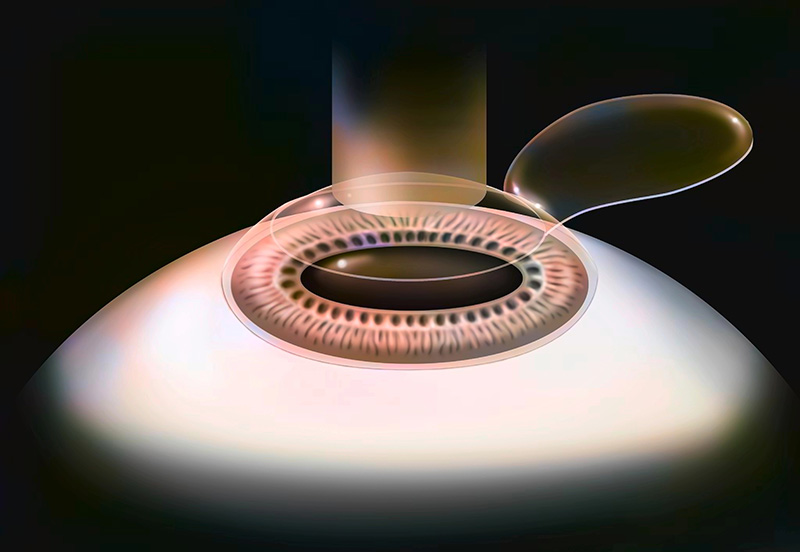Getting LASIK is a life-changing decision that promises to give you the gift of clear, natural vision. But before you can trade in your glasses or contacts, you must first be confirmed as a good candidate for the procedure.
While LASIK is one of the most popular and successful vision correction surgeries performed today, it’s not a one-size-fits-all solution. Your eyes and overall health must meet certain criteria to ensure the procedure is safe and the long-term results are maximized. Determining eligibility is, in fact, the most critical step. It ensures your safety and sets the stage for a successful outcome.
Below, we break down the five key signs that indicate you are an excellent candidate for LASIK in Los Angeles, followed by additional factors to consider.
1. Stable Vision Prescription
One of the most fundamental requirements for successful LASIK is having a stable vision prescription. Why? LASIK permanently reshapes your cornea based on your current vision needs. If your prescription continues to change significantly after the surgery, your vision may regress, requiring another procedure (an enhancement) or returning to glasses or contacts.
A common benchmark for eligibility is having no significant change in your prescription for at least 12 months prior to the consultation. For many people, this stability is achieved by their early to mid-twenties. If you are younger or if your vision is still fluctuating, your surgeon will likely recommend waiting. Unstable prescriptions are often a sign that the eye is still growing or changing, which can compromise the durability and long-term effectiveness of your LASIK results.
2. Healthy Eyes and Corneas
The cornea, the clear, front dome of the eye, is the tissue that is reshaped during the LASIK procedure. Therefore, its health and structure are paramount.
A good candidate has overall healthy eyes, free from severe or uncontrolled conditions such as:
- Severe Dry Eye Syndrome: LASIK can temporarily exacerbate dry eye. If the condition is severe or chronic, it can interfere with the healing process and cause long-term discomfort.
- Active Eye Infections or Inflammation: Any active condition must be treated and resolved before surgery to prevent complications.
- Keratoconus: A progressive eye disease where the cornea thins and bulges outward. LASIK is contraindicated for patients with this condition, as it can worsen the thinning.
Importantly, you must have adequate corneal thickness. The laser removes a small amount of tissue to correct your vision. If your cornea is naturally too thin, removing this tissue could weaken the eye’s structure and lead to serious vision problems. Advanced diagnostic tools at Soroudi Advanced LASIK & Eye Centers in Beverly Hills, including corneal topography, play a vital role in determining your corneal suitability with millimeter precision, ensuring a safe and successful outcome.
Also Read: LASIK Prep Guide: What Patients Should Know Before Surgery
3. Realistic Expectations About Results
LASIK is remarkably effective, with a very high success rate in reducing or eliminating the need for corrective lenses. However, a good candidate must have realistic expectations about the outcome.
LASIK is a vision correction procedure, not a vision perfection procedure. While many patients achieve 20/20 vision or better, the goal is to make your uncorrected vision as clear as possible. A candid discussion with your surgeon will clarify your potential post-operative vision based on your current prescription and eye health.
It’s also important to understand the concept of presbyopia, the natural loss of near focusing ability that occurs with age, typically after age 40. LASIK does not prevent this aging process, meaning even if you have perfect distance vision after LASIK, you may still need reading glasses for fine print later in life. Understanding both the extraordinary benefits and the inherent limitations of the procedure is essential for achieving high patient satisfaction.
4. Age and General Health Factors
While there is no upper age limit for LASIK, patients must be at least 18 years or older to ensure vision stability. Ideally, patients are in their mid-20s or older.
General health is another critical component. Conditions that impair the body’s ability to heal can negatively affect your recovery and final vision outcome. This includes:
- Uncontrolled Diabetes: Poorly managed diabetes can slow healing and increase the risk of infection.
- Autoimmune Disorders: Conditions like rheumatoid arthritis, lupus, or Sjogren’s syndrome can affect eye health and wound healing.
- Immunodeficiency Disorders: These conditions can compromise the eye’s ability to recover properly.
Also Read: The Top 5 Benefits of LASIK Eye Surgery You May Not Know
5. Commitment to Recovery and Follow-Up Care
LASIK is a quick outpatient procedure, but the few weeks and months following surgery are important for establishing your final, clear vision. A good candidate must demonstrate a commitment to recovery and follow-up care.
Your eyes will be healing during this period, and successful recovery depends heavily on your adherence to the surgeon’s instructions. This includes:
- Attending all scheduled follow-up visits (typically the next day, one week, one month, and so on). These appointments allow the surgeon to monitor the healing process, check for complications, and ensure your vision is on track.
- Consistent use of prescribed eye drops (antibiotics and anti-inflammatory drops) to prevent infection and manage discomfort.
- Strictly following activity restrictions, such as avoiding rubbing your eyes, wearing protective eyewear, and refraining from swimming or strenuous activities for the recommended period.
The temporary inconvenience of post-op care is a small price to pay for a lifetime of uncorrected vision.
Additional Factors That May Affect Candidacy
Beyond the five core signs, a few other personal factors may affect whether LASIK is right for you, or if an alternative procedure might be better:
- Pregnancy or Breastfeeding: Hormonal changes during this time can cause temporary vision fluctuation, which makes them temporary disqualifiers. Surgeons typically recommend waiting until a few months after breastfeeding has stopped.
- High Prescriptions or Severe Astigmatism: While LASIK can correct a wide range of vision issues, very high prescriptions require removing more corneal tissue. If your correction exceeds safe limits, Dr. Soroudi may recommend alternatives, such as PRK (photorefractive keratectomy) or ICL (Implantable Collamer Lens), both of which are specialties at Soroudi Advanced LASIK & Eye Centers.
- Lifestyle and Occupation: Certain occupations or intense contact sports (like boxing) may increase the risk of an eye injury, making surface ablation procedures like PRK sometimes a preferred option over LASIK, which creates a corneal flap.
Also Read: Can LASIK Fix Astigmatism? What LA Patients Should Know
Conclusion
The success of your LASIK procedure relies not only on meeting the candidacy requirements but also on the skill and experience of your surgeon. Dr. A. Ebbie Soroudi is an internationally recognized, board-certified, and subspecialty-trained ophthalmologist with expertise in all aspects of refractive surgery. Having personally performed over 30,000 successful procedures, he brings an unparalleled level of precision, care, and advanced technology to every patient.
His commitment to honesty and meticulous assessment ensures that if LASIK is not the best or safest option for your unique eyes, he will guide you toward a superior alternative, such as PRK, ICL, or other lens-based surgeries. Choosing Soroudi Advanced LASIK & Eye Centers means choosing a practice that puts safety and optimal results first.
Ready to find out if you qualify for the clear vision you’ve always wanted?Schedule a personalized LASIK consultation with Soroudi Advanced LASIK & Eye Centers today to have your eyes evaluated by a leading LA surgeon and determine the safest, most effective path to a life without corrective lenses.



